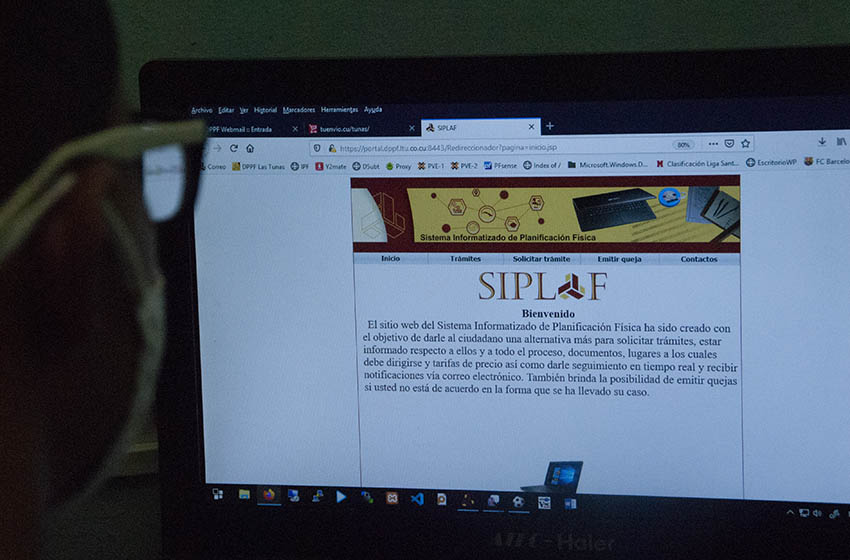
From Monday this week, the Computerized Physical Planning System (SIPLAF) is accessible to the inhabitants of this eastern Cuban province, which will allow them to start and eventually complete several of their most common procedures related to the Physical Planning offices.
Las Tunas, Cuba.- Accessible at the web address https://portal.dppf.ltu.co.cu and designed entirely by specialists from this eastern territory, through SIPLAF the residents of this province will be able to obtain information “regarding the entire process, documents, places to which they should go and price rates, as well as follow up on them in real-time and receive notifications via email," explained the specialist Michel Escalona Gómez.
"It also offers the possibility of issuing complaints if you do not agree with the way your case has been handled," said the deputy director of Computer Development in the Provincial Directorate of Physical Planning here.
In total, users will be able to request 21 different procedures from there, among which are works authorization, technical reports 322-14, construction licenses; as well as others in accordance with project modifications or reviews, rights claims, technical reports, request for lots ...
On average, Las Tunas Physical Planning specialists receive between 130 to 140 procedures daily. Due to their own characteristics, almost none of them are completed the same day, so applicants must return between three and four times, almost always just to find out what steps their processes are at.
For this reason, one of the main advantages of SIPLAF is that once the user initiates a procedure, he will be able to keep in constant communication with the specialists of his respective municipal address and know, via email, in which phase his procedure is, he explained. Escalona Gómez. This, he insisted, "will avoid unnecessary trips to our offices."
The implementation of this system meant for the Provincial Directorate of Physical Planning to invest in connectivity infrastructure between its municipal offices and between its own departments. "It even helps us to better evaluate our work, because the system generates alerts to specialists about upcoming procedures to expire," concluded Escalona Gómez.
SIPLAF appeared for the first time in the public arena here two years ago during the IT solutions fair held in connection with the provincial conference of the Cuban Computer Union (UIC), led by its main developer, the engineer Randy Daniel Martínez Morales. If this trial is successful, this system could become the national window through which citizens will carry out their negotiations with the National Institute of Physical Planning.





